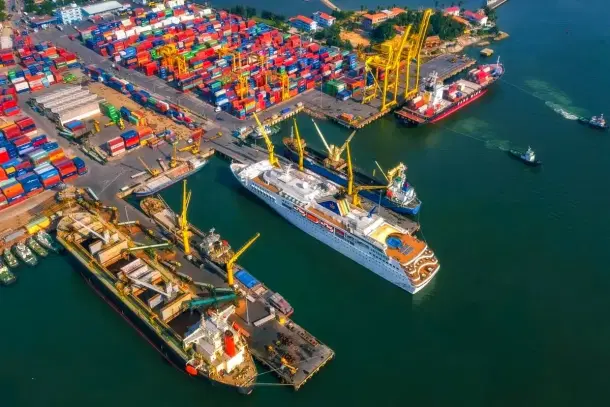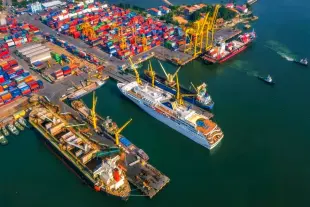Infrastructure
Economic Survey 2023-24: India Charts Course To Become Maritime Powerhouse, Shipbuilding Output To Double By 2030
V Bhagya Subhashini
Jul 23, 2024, 11:09 AM | Updated 12:04 PM IST
Save & read from anywhere!
Bookmark stories for easy access on any device or the Swarajya app.


The Indian government has set its sights on becoming a major maritime power. The Economic Survey for 2023-24, presented to parliament on 22 July, revealed ambitious plans to significantly boost the country's shipbuilding industry by 2030.
The goal is to increase the average daily ship output (gross tonnage) from 16,000 tonnes in 2020 to over 30,000 tonnes within six years.
This initiative aligns perfectly with the Maritime Amrit Kaal Vision 2047, which aims to transform India into a central maritime hub. To achieve this, the government is leveraging several key strategies.
The Sagar Setu application is being utilised to improve efficiency and expedite processes at Indian ports. Additionally, the government is actively encouraging the use of coastal shipping as a cost-effective and reliable mode of cargo transportation.
India's Maritime Progress
The Economic Survey emphasises the critical role of a robust shipping industry in India's economic well-being, particularly in today's volatile geopolitical climate, where global trade routes face potential disruptions. The report highlights the significant strides India has already made in the maritime sector.
Major port capacity has nearly doubled since 2014, demonstrating India's commitment to handling growing trade volumes. Improved coordination through the PM Gati-Shakti National Master Plan, coupled with a focus on public-private partnerships, has strengthened India's global maritime competitiveness.
This is reflected in the jump from 44th to 22nd place in the World Bank Logistics Performance Index's International Shipments category between 2014 and 2023. Container turnaround times have been slashed by 50 per cent from 2014 to 2023-24, signifying a significant improvement in port operational efficiency.
The Economic Survey acknowledges the significant progress made under the Sagarmala National Programme, a comprehensive initiative launched in 2015 to harness India's coastline and waterways for economic development.
As of today, 262 projects worth Rs 1.4 lakh crore have been successfully completed. An additional 217 projects with an investment of Rs 1.65 lakh crore are currently underway. The remaining 360 projects valued at Rs 2.7 lakh crore are in the development phase.
Inland Waterways and Tourism
The development of inland waterways is another key focus area. The Inland Waterways Authority of India (IWAI) is actively involved, with a capital expenditure of Rs 1010.5 crore for FY24.
Feasibility studies for 106 new National Waterways are underway, aiming to improve navigation and promote shipping on viable waterways.
These advancements are expected to benefit not only cargo transportation but also tourism. Improved waterways will enhance the operation of tourist vessels, and the government is actively promoting river cruise tourism. Additionally, 75 lighthouses are being developed as tourist attractions with museums, amphitheatres, and cafeterias, reports Money Control.
The Economic Survey underscores the critical role of developing inland waterways in reducing logistics costs. Increased investment and infrastructure development will be crucial for achieving this goal.
V Bhagya Subhashini is a staff writer at Swarajya. She tracks infrastructure developments.




